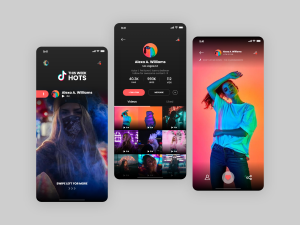
Introduction
The movie industry is always evolving, and one of the most exciting innovations is virtual reality (VR). This cutting-edge technology is transforming the way films are made and experienced, offering both creators and viewers an immersive experience like never before. In this article, we will explore how the movie industry is using virtual reality to enhance storytelling, create new forms of entertainment, and shape the future of cinema.
The Rise of Virtual Reality in Filmmaking
Virtual reality is not just a tool for gaming; it has found a significant place in the movie industry. Directors and producers are increasingly exploring VR to create immersive experiences that traditional filmmaking cannot achieve. By enabling viewers to step inside a movie and interact with the environment, VR offers a unique form of storytelling that can evoke deeper emotional responses.
How the Movie Industry Uses Virtual Reality
Virtual reality (VR) is changing the way we watch and experience films. The movie industry is increasingly using VR to make stories more engaging and immersive. With VR, viewers can feel like they are part of the action, which is a big change from just sitting and watching a screen. This article looks at how VR is used in filmmaking, how it affects audiences, and what the future might hold for this exciting technology.
Pre-Production and Visualization

One of the key areas where VR is making an impact is in pre-production. Filmmakers can use virtual reality to visualize scenes and settings before they are physically constructed. This technology allows directors to explore different camera angles, lighting, and set designs in a virtual space, saving time and resources. By providing a comprehensive view of how a scene will look, VR helps filmmakers make informed decisions and avoid costly mistakes.
Virtual Reality as a Storytelling Medium
Beyond pre-production, VR is also being used as a storytelling medium in its own right. VR films offer a 360-degree experience, allowing viewers to explore the narrative world from multiple perspectives. This immersive environment encourages active participation, making the audience feel like a part of the story. Filmmakers are experimenting with this medium to create short films and documentaries that push the boundaries of traditional storytelling.
The Role of Virtual Reality in Filmmaking

Virtual reality is changing the way films are created. Traditionally, filmmakers have been limited by the constraints of two-dimensional screens. With VR, creators can now build fully immersive 3D worlds where viewers feel as if they are part of the story. Directors are using VR to plan scenes, visualize camera angles, and even create entire movies in virtual environments. This allows for greater creativity and experimentation in storytelling.
For instance, VR is being used to pre-visualize action sequences in blockbuster movies, enabling directors to see exactly how a scene will play out before filming even begins. This helps save time and money by reducing the need for reshoots and improving the overall quality of the film.
VR Helps Filmmakers Visualize Better
One of the biggest benefits of virtual reality (VR) is that it helps filmmakers see their movie before they even start filming. With VR, directors can step into a virtual version of the set and look around. They can move the camera, adjust the lighting, and make changes without needing to build expensive sets or rent locations. This saves time and money, and it helps them plan things more carefully.
For example, if a director is filming a big action scene, they can use VR to see exactly how it will look. This way, when they get to the real set, they already know where everything should go. It helps make sure everything runs smoothly during filming.
Enhancing the Audience Experience

One of the most exciting uses of virtual reality in the movie industry is how it is enhancing the audience experience. Traditional movies allow viewers to passively watch a story unfold, but with VR, audiences can become active participants. Virtual reality headsets transport viewers into the movie, allowing them to explore the world of the film from different angles and perspectives.
For example, in a VR movie, viewers can choose where to look, interact with characters, and experience scenes from various viewpoints. This level of immersion adds depth to the narrative and makes the experience far more engaging than a typical movie.
VR in Animated Films and CGI
Virtual reality is also having a big impact on animated films and computer-generated imagery (CGI). Animation studios are using VR to create more detailed and realistic environments. By designing scenes in VR, animators can get a real sense of scale and space, which helps them craft more convincing and visually stunning worlds.
Moreover, VR allows animators to “walk through” their scenes, making it easier to spot any potential issues with the layout or camera movement. This results in smoother, more polished final products.
Creating New Forms of Storytelling

With VR, the movie industry is no longer limited to traditional storytelling formats. Virtual reality opens the door to new and experimental ways of telling stories. VR films often blur the line between movies and video games, allowing viewers to interact with the narrative and shape the outcome.
Some filmmakers are already creating fully interactive VR movies, where the audience’s decisions impact how the story unfolds. These experiences provide a new level of engagement, offering an experience that feels more personal and tailored to each viewer.
Marketing and Promotion
Virtual reality is also revolutionizing the way movies are marketed and promoted. Studios are creating VR experiences based on upcoming films to generate buzz and excitement. These experiences can include virtual tours of movie sets, interactive trailers, and behind-the-scenes content, providing fans with exclusive insights into the filmmaking process. By engaging audiences in this interactive manner, studios can build anticipation and drive ticket sales.
Challenges and Limitations of VR in the Movie Industry

While virtual reality offers many exciting opportunities, there are still some challenges to overcome. One of the main limitations is accessibility. VR headsets can be expensive, and not all moviegoers have access to the equipment needed to fully experience VR films. This limits the potential audience for VR movies.
Another challenge is the learning curve for filmmakers. Creating VR content requires a different approach to storytelling and camera work, which can be difficult for traditional filmmakers to master. However, as technology improves and more filmmakers experiment with VR, these challenges are likely to diminish over time.
Overcoming VR’s Limitations
Even though VR is exciting, there are still some challenges. One big issue is cost. High-quality VR headsets can be expensive, so not everyone can enjoy VR movies. Many people still watch regular films because they don’t have the equipment for VR.
Another problem is that some filmmakers find it hard to move from traditional filmmaking to VR. It takes time to learn how to use VR tools and think about stories in new ways. However, as more people become familiar with this technology, these challenges will likely get easier to handle.
Creating Unique Movie Experiences
Virtual reality (VR) offers new ways for people to enjoy movies that weren’t possible before. Instead of just sitting back and watching, audiences can now interact with the story. For example, in some VR movies, viewers can choose what happens next. This makes each person’s experience different and gives them more control over the story.
This level of interaction helps viewers feel more connected to the movie. It’s not just about watching anymore; it’s about being part of the adventure. This is one reason why more filmmakers are excited about using VR to offer something new.
The Future of Virtual Reality in Cinema

The future of virtual reality in the movie industry looks bright. As VR technology becomes more affordable and accessible, we can expect to see more films created specifically for virtual reality. This will likely lead to the rise of entirely new genres of entertainment, blending movies, video games, and interactive experiences.
In addition, VR could change the way we experience movies at home. With advancements in VR headsets, audiences may be able to watch films in virtual theaters, providing a more social and immersive viewing experience. Virtual reality has the potential to revolutionize not only the way films are made but also how we watch and engage with them.
Analysis Table
| Aspect | Traditional Filmmaking | Virtual Reality in Filmmaking |
|---|---|---|
| Audience Interaction | Passive watching | Active participation and immersion |
| Visualization of Scenes | 2D screens and static perspectives | Immersive 3D environments and angles |
| Creation Process | Limited pre-visualization tools | Full scene visualization and interaction |
| Types of Experiences | Linear storytelling | Interactive and non-linear storytelling |
| Cost | Moderate production costs | Higher initial costs for VR technology |
Comparative Table
| Factor | Advantages of VR | Challenges of VR |
|---|---|---|
| Creativity and Innovation | Enhanced creativity with immersive worlds | Steep learning curve for filmmakers |
| Audience Experience | Greater immersion and interactivity | Expensive equipment limits accessibility |
| Filmmaking Efficiency | Saves time with pre-visualization tools | Higher initial costs |
| Storytelling | New forms of interactive storytelling | Requires new storytelling approaches |
| Adoption and Accessibility | Increasing interest and experimentation | Limited audience due to hardware costs |
Conclusion
Virtual reality is pushing the boundaries of what is possible in the movie industry. From immersive storytelling to new forms of audience interaction, VR is transforming the way films are made and experienced. While there are still challenges to overcome, the potential for VR in cinema is enormous. As technology continues to advance and more filmmakers embrace virtual reality, the future of movies is likely to be more interactive, immersive, and engaging than ever before.































